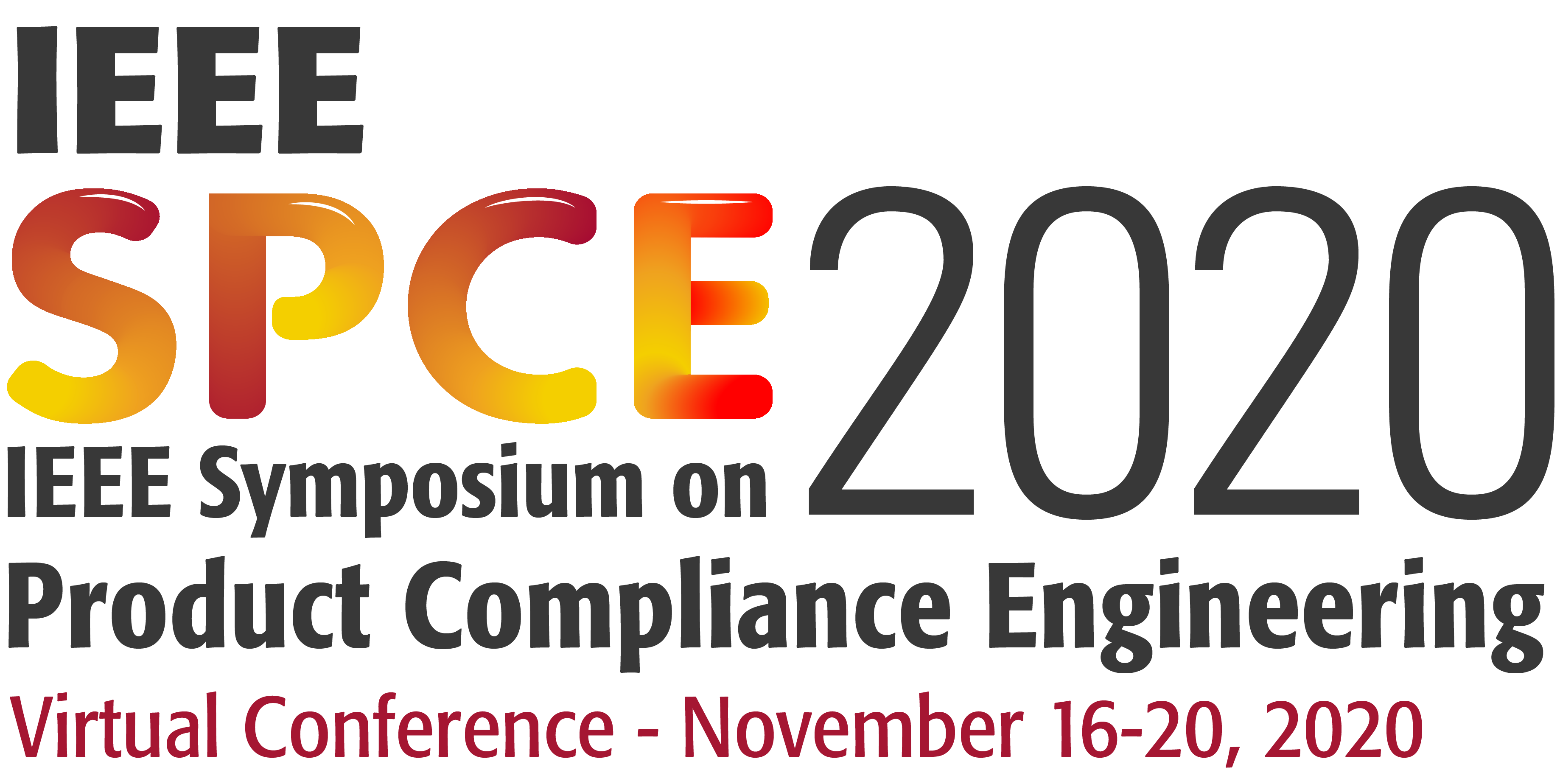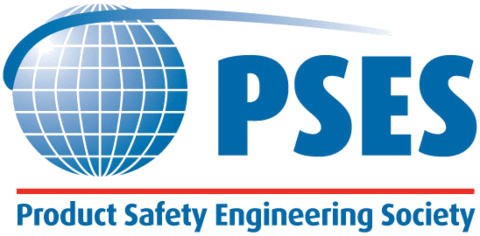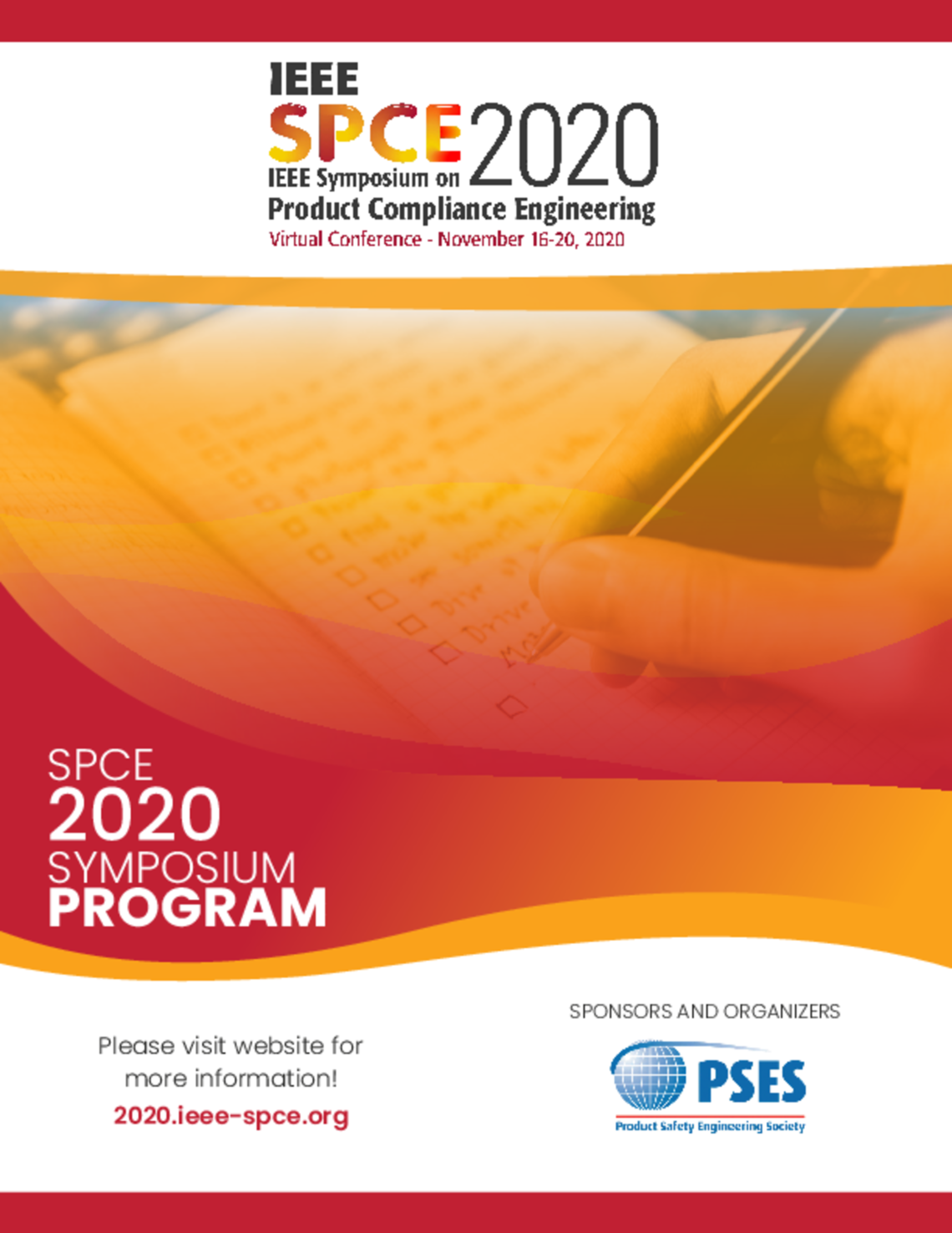The safety and well-being of all conference participants is our priority. IEEE has been monitoring the developing COVID-19 pandemic (Coronavirus).
The World Health Organization has declared COVID-19 (Coronavirus) to be a pandemic, many governments have enacted travel bans and numerous state and local governments are prohibiting large or even moderately-sized public gatherings. After studying and evaluating the announcements, guidance, and news released by relevant national departments, we are sorry to announce that the in-person gathering of SPCE 2020, scheduled to be held November 16-17, 2020 in Portland, Oregan has been cancelled.
We are thrilled to announce that the SPCE 2020 organizing committee has been working diligently to develop an on-demand virtual meeting platform to take the place of the face-to-face meeting. The launch date for SPCE 2020 Virtual will be November 16, 2020.
Through the online platform, attendees will be able to watch all author presentations live as well as have the ability to ask questions and answers directly through a dialogue box on-Demand. All questions will be emailed to each presenting author directly and you will be able to interact through email to converse about your questions.
The IEEE Product Safety Engineering Society hosts a premier symposium annually on all relevant topics for workers and innovators in the product safety area. Join us virtually for SPCE 2020 for five days of technical sessions and exhibits!
Media
John Thomas

IEEE SPCE 2020 Keynote
Title: A Systems Approach to Product Safety using STPA
Bio: Dr. John Thomas leads research in MIT’s Engineering Systems Lab to study engineering mistakes and human error in order to develop systematic methods to prevent them. His primary research is focused on STPA and related methods for system safety, security, and human factors engineering. His background includes work in medical devices, nuclear power plants, information technology, autonomous vehicles (land, air, and space), robotics, manufacturing, and others. He teaches classes on software engineering, system engineering, system safety, cybersecurity, and human factors. He serves on industry committees responsible for international safety and cybersecurity standards by ISO, IEC, SAE, and others. He collaborates extensively with industry and provides professional education on the latest generation of system safety approaches.
Abstract: As today’s products have become more and more complex, modern approaches to system safety have also evolved. The latest generation goes beyond component malfunctions and component failures to capture often overlooked and systemic causes of accidents like features that are missing from the design, requirements that are incomplete, incorrect, or missing, dysfunctional interactions between components operating exactly as specified, clumsy software and automation, and unexpected human behaviors. A new class of losses, component interaction losses, has become increasingly prevalent in today's complex systems and can occur even without any individual component failures and when systems operate exactly as designed. Simply adding redundancy and increasing component reliability is not enough. Today, methods like STPA are used for both hazard analysis and early development efforts to identify necessary safety requirements and drive design decisions as they are being made thereby preventing mistakes and reducing costly rework. These methods have been adopted across aerospace, defense, automotive, nuclear, chemical, medical, and other industries. The talk will conclude with a summary of worldwide adoption and international industry standards that implement this latest generation of system safety.
Registration
| IEEE & PSES Members Early Registration | $185 |
| Non-Members Early Registration | $235 |
| IEEE & PSES Members Late Registration | $210 |
| Non-Members Late Registration | $260 |
| IEEE Life Members & Students | $85 |
Author Information
These Instructions apply both to Authors, who are publishing a Formal Paper and presenting it at SPCE and Presenters, who will be presenting a Presentation (without Formal Paper) at SPCE.
Please note that BOTH an Author of an accepted Formal Paper AND a Presenter of an accepted Presentation (without Formal Paper) MUST register for and attend the symposium AND present their work for it to be published in the proceedings. Works that do not meet these requirements will not be presented at the symposium and Formal Papers will not be published in IEEE Xplore. No exceptions. Cooperation from all involved in the 2020 SPCE will allow for the volunteer Technical Program Committee members and volunteer Peer Reviewers to assemble the best technical program possible. Thank you in advance!
The symposium caters to both practitioners and academics. For this purpose, the format of the submissions is divided into two categories: Presentation (without Formal Paper) and Formal Paper (with Presentation (of Formal Paper)), both having different submission requirements. Please read the following Author & Presenter Instructions carefully to ensure an accurate submission.
The SPCE Powerpoint Presentation can be found here.
We invite Presenters to submit an Abstract and Reviewable Presentation (without Formal Paper) using the online submission system, EDAS, for presentation at SPCE 2020. The abstract should summarize the scope of the presentation, the primary results and findings, and be accompanied by a draft, reviewable Presentation for review. This material is needed by the first Author/Presenter deadline of July 1, 2020, so that the Technical Program Committee (TPC) will be able to understand the originality and the value of the work, and its appropriateness for SPCE 2020. It will also allow for the TPC to make choices on program content based on the quality of submission, redundancy with similar submissions, etc., since it is anticipated that there will be more submissions than presentation time periods (slots).
A submission implies a willingness to register and present the work if the Abstract and Presentation (without Formal Paper) is accepted for presentation at the symposium.
Authors are invited to submit an Abstract and Reviewable Formal Paper reporting original research of theoretical or applied nature using the online submission system, EDAS. Incomplete submissions may be automatically rejected. The Abstract should summarize the scope of the paper and explicitly include the primary results and findings, emphasizing new advances, theories and/or applications. The reviewable Formal Paper should contain enough content so that the TPC will be able to understand the originality and the value of the work. It will also allow the TPC to make choices on program content based on quality of submission, redundancy with similar submissions, etc., since it is anticipated that there will be more submissions than presentation time periods (slots). Submissions not selected will be either redirected to SPCE 2020 or other PSES forums, or held in reserve in case of late cancellations.
A submission implies willingness to register and present the work if the Formal Paper is accepted for presentation at the symposium. Authors must submit the final version of the Formal Paper, including a Presentation (of Formal Paper), register for the symposium, and attend to present their work.
Manuscripts will be reviewed by the Technical Program Committee. Authors of accepted full papers must submit the final paper version according to the deadline, register for the workshop, and attend to present their papers. The maximum length for final papers is 6 pages without exceptions.
For your convenience, the IEEE Style Manual and Conference Paper Templates in various formats are available here. *The maximum length for final papers is 6 pages without exceptions.
High-quality papers that are accepted and presented will be submitted for inclusion in the IEEE Xplore digital library and indexed by EI/Compendex.
Author Registration & Submission
The safety and well-being of all conference participants is our top priority. Please know that our thoughts are with all those affected by the COVID-19 outbreak. We apologize for any inconvenience the cancellation of the onsite program may have caused our participants.
The SPCE 2020 Organizing Committee has decided to offer an online platform for accepted authors to upload recorded presentations. In order to be eligible, the following steps should already be completed:
1. Electronic Copyright via EDAS.
2. Final Manuscript submitted via EDAS.
3. Paid all necessary registration/publication fees (more information on pricing below).
In order to be published in the SPCE 2020 Proceedings, and in IEEE Xplore, you must complete the three steps above as well as submit your pre-recorded presentation by October 15th.
Presentations without papers should prepare a 45-minute pre-recorded presentation. These will be followed by a 10-minute Q&A session during the virtual conference.
Full Papers should prepare a 15-minute pre-recorded presentation. These will be followed by a 5 minute Q&A session during the virtual conference.
REGISTRATION REQUIREMENT:
The registration rates have been adjusted to accommodate the move to an online platform. The updated fees are as follows:
IEEE & PSES Members Early Registration $185
Non-Members Early Registration $235
IEEE & PSES Members Late Registration $210
Non-Members Late Registration $260
IEEE Life Members & Students $85
PRESENTATION PREPARATION:
A pre-recorded presentation, as a voice-over PPT, should be created for each accepted submission. For information on how to create a voice-over presentation in Microsoft Office please visit: https://ieeetv.ieee.org/ieeetv-specials/recording-your-presentation-with-zoom
1. Please begin the presentation with a brief self-introduction of the presenter/s (must be one of the authors).
2. Please save your presentation as an MP4 file and name the file your Paper Number.
3. Your final MP4 file may not exceed 200 MB.
PRESENTATION UPLOAD:
To upload, first log onto EDAS and click on your accepted paper. Under Final Manuscript, you will find the upload option “Virtual Presentation Upload”. Click the cloud icon and upload your final presentation by October 15th.
Please note that the final manuscripts must be uploaded prior to uploading the pre-recorded presentation.
Upload your file according to the following:
1. Choose File: Please upload using the “Choose File” button. Once the file name is listed, please click “Upload MP4 Video”.
**Please note that MP4 files may take a few minutes to successfully upload. We recommend using a strong internet connection when uploading and to be patient.
PRESENTER INFORMATION:
1. To upload, first log onto EDAS and click on your accepted paper.
2. Click the cloud icon and upload your final presentation by October 15th.
3. Please also update your bio & Headshot under your EDAS profile.
ADDITIONAL INFORMATION:
Authors that do not wish to provide a pre-recorded presentation and don’t wish to keep their paper in the proceedings can withdraw from SPCE 2020 and receive a Full Refund. If you are interested in withdrawing, please email [email protected] for further information.
SUBMIT YOUR PRESENTATION
The Online Conference will be available to paid attendees starting November 16th. More information on how to access will be forthcoming.
Again, we apologize for any inconvenience this has or may cause. For questions or concerns, please contact Shelby Lussier, [email protected]. We appreciate your patience and look forward to bringing you the highest-quality content for SPCE 2020.
If authors would like to post their papers electronically on any web site, any ftp site, or any other electronic dissemination technique, they must include the IEEE Copyright notice on the initial screen displaying the IEEE-copyrighted material.
IEEE Copyright Form
Each accepted contribution to SPCE 2020 must be accompanied by a signed Copyright Form. The copyright form should be filled out and signed by one author, preferably the primary author.
Guidelines for Preparing Visuals for Presentations
Well constructed visuals can make your presentation more exciting, effective and memorable. However, in order for the visuals to accomplish this, it is critical that they be properly planned and prepared or they can become a liability rather than an asset. The guidelines on these pages are designed to help you make the most of your visual presentation.
Your visual presentation should emphasize the most important points and ideas of your oral presentation. Use the visuals to reinforce, clarify, illustrate or highlight individual points. Visuals are illustrating, not repeating, your presentation. Their purpose is to add interest and emphasis, not to compete with what you are saying.
Some key points to remember when preparing your visuals:
- Simplicity is a key to gaining your audience’s attention and retaining their interest.
- Focus on one idea at a time. To include three or four ideas in a single visual usually detracts from your presentation and is apt to confuse your audience.
- Do not repeat the text of your presentation word-for-word on the visual.
- Keep statements simple and to the point, using key words and phrases.
- Use only essential information which supports your statements; for example, do not project all the statistics you are using. Pick only the key ones.
- Experiment with a variety of layouts to determine the most effective ones. Remember that people retain information best through a picture or a chart rather than words.
- Consider audience size. Visuals must be prepared properly so that they are clear to even those at the back of a large room.
- Consider handing out copies of your visual presentation. Be sure to have sufficient quantity available for your audience.
- Keep it simple. It is easier for the audience if you use three simple visuals than a single complex one.
- Keep your audience in mind when designing your visual aids. What terminology will they understand? What examples have meaning for them?
- Proofread very carefully. Try to have someone else proof in addition to yourself. It is hard to overlook errors when they are magnified in front of an audience. Remember, even a small error in such a focal part of your program can undermine the credibility of your entire presentation.
- Fonts should be clear and easy to read. Use Helvetica or similar sans serif fonts. Decorative fonts are not recommended. Use only one typeface per visual. Add variety by using different sizes and bolding title lines.
- Colored fonts should have a dark background (dark blue is best) with primary titles in either yellow or white and secondary titles in the remaining color. Details should be shown in clear bright, light contrasting colors. Use no more than three colors per visual.
- Avoid using shades of the background color for titles or details.
- Avoid commercial endorsements. A photograph of apparatus which incidentally includes a trade name is allowed, but a table comparing attributes of identified vendor’s products will not be allowed. There is much gray area in between these two examples; discuss any concerns you may have with your session chair. The display of the logo of the company with which you are associated is restricted for use to the first and last PowerPoint slides or visuals (usually the title slide). This restriction applies to logos of educational institutions as well.
- Test your presentation ahead of time. Make sure it is easy to read from an appropriate distance, and that everything is in the proper order.
The text (or word) portion of presentations is used to state facts or objectives. When lines of text alone do not illustrate your point, a chart, graph or graphic might be more appropriate.
- Avoid using more than six or seven words (30–40 characters) per line, six or seven lines per visual. Make sure type is well spaced and not crowded.
- Eliminate words that do not add meaning, for example: the, an, etc.
- Avoid complete sentences. Use bulleted phrases.
- Be consistent in grammatical construction of lists; for example, use all verbs or use all noun phrases.
- Use 36 point type for all titles, and for the text of visual aids to be used in very large rooms.
- Use at least 18 point type for the main text in other than the largest rooms.
- Use bullets at beginning of lines to separate ideas.
- Use functions in PowerPoint that allow you to build information, bullet by bullet, on a slide, to keep the audience from reading ahead.
Title Pages
Use title pages to introduce new topics or add special emphasis to a very important point. The best titles are a few simple lines in large type.
Tabular Charts
Tabular charts are used to show raw data and numerical relationships. Use only a few key examples on the visual to illustrate your point.
Bar Graphs
Bar graphs are used to show absolute data or relationships and comparisons. Be sure to include scales and values. Be sure the type is legible.
Pie Charts
Pie charts are good for illustrating percentage relationships or parts of a whole. No more than eight segments are recommended.
Line Graphs
Line graphs are ideal for illustrating trends or performance over time. Your scale should include significant dates and milestones. Graphs should include no more than three lines. In black and white visuals, the lines should be distinctly different, e.g., dashed, solid, dots, etc. In color visuals, the lines should be easily differentiated colors which contrast well with the background.
Block or Process Diagrams
Block or process diagrams are good for illustrating structural relationships and designs. Graphics of this type show how each piece contributes to the whole. Avoid overcrowding. Limit your chart to no more than 10 simple geometric shapes and titles connected by lines and arrows.
One-Line Diagrams
SPCE 2020 papers often contain electrical one-line diagrams which are an integral part of a technical discussion. You should limit applying these to needed segments of a system to make them legible to the audience.
Photographs
Good quality photographic visuals can make a major contribution to your presentation. Be extra careful with photographs: they must be very crisp and clear, with high contrast between light and dark areas. Do not superimpose text over the image. If text is needed on the visual, it should be placed in areas that have been cleared of the image. Be sure to test your photos, projecting them to the size they will be when used to ensure that they are clear and easily recognizable.
Exhibitor Opportunities
We welcome all Exhibitors to be a part of the 2020 Symposium that will now be held virtually!
Each exhibit registration receives one FREE attendee registration
Please send the completed registration form to [email protected]




